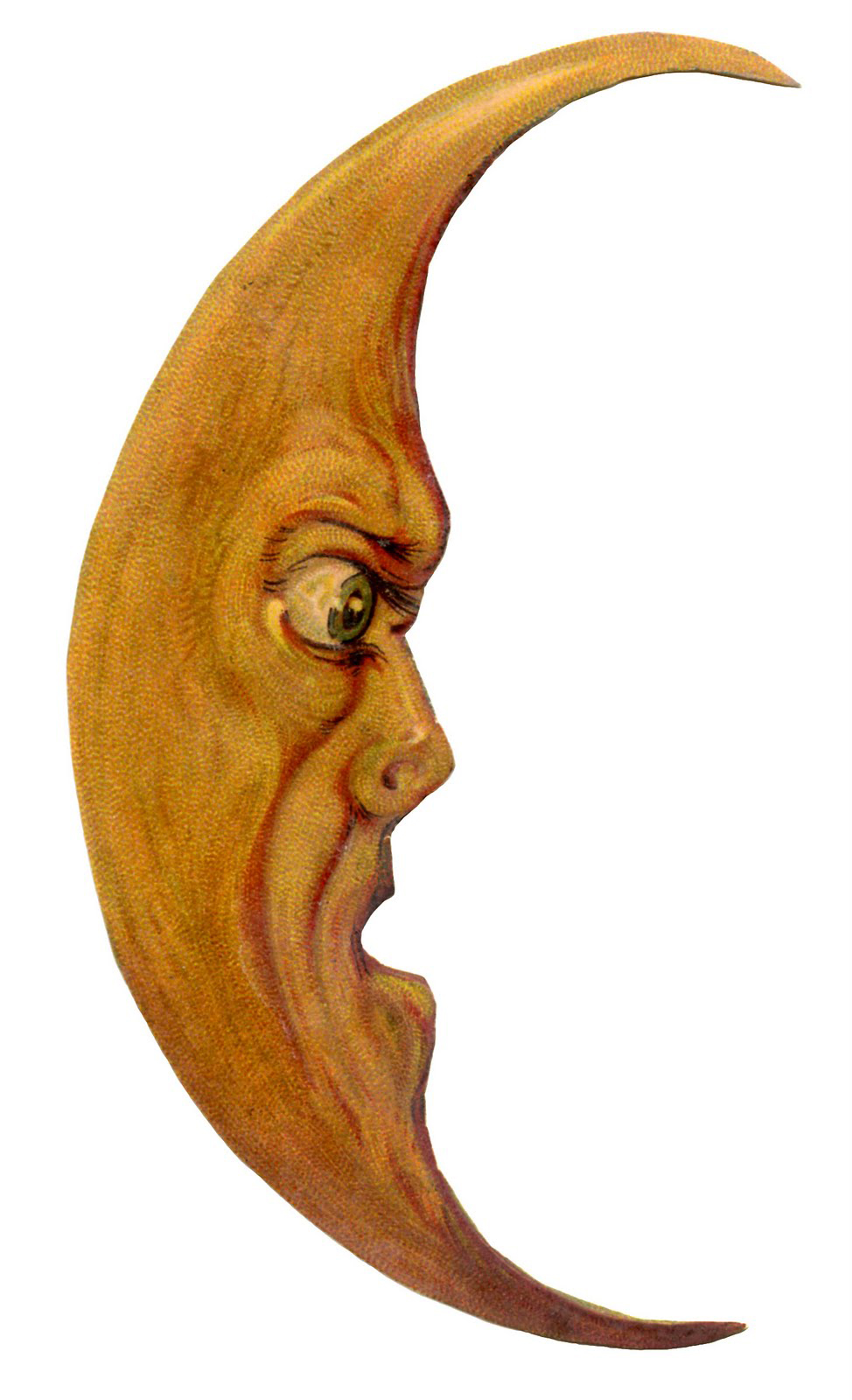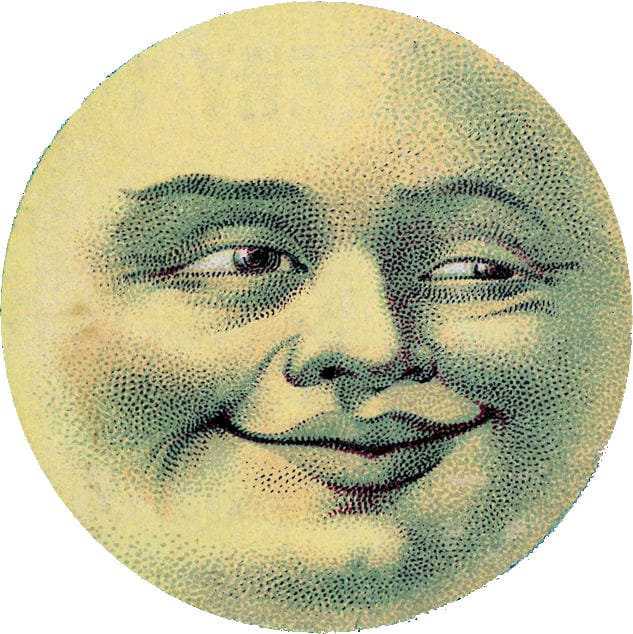Do you ever gaze at the moon, searching for a familiar face in its luminous expanse? The "man in the moon," a ubiquitous figure across cultures, is a testament to the human brain's innate tendency to find patterns and meaning in the world around us, even among the celestial bodies.
The concept of a "man in the moon" is far from a modern invention. This pareidolic phenomenon, the tendency to perceive a specific, often meaningful, image in a random or ambiguous visual pattern, has captivated humans for centuries. This image takes shape from the play of light and shadow across the lunar surface. The dark, vast plains on the near side of the moon, known as maria, combined with the lighter highlands, create a configuration that many find reminiscent of a human face. This perception, however, is culturally influenced. While Western cultures often recognize a "man," other societies perceive different figures, showcasing the subjective nature of this celestial Rorschach test.
For further exploration, consider the diverse representations and interpretations of this phenomenon across various cultures, as well as its presence in art, literature, and popular culture.
- The Legacy Of Olga Korbut A Gymnastics Icon
- Top 10 Facts You Didnt Know About Jennifer Garner And James Garner
The origin of this imagery dates back at least to the 1902 fantasy film, Le Voyage dans la Lune, where the "man in the moon" is notably struck by a spacecraft. This depiction underscores how the idea of a lunar resident has been part of our cultural narrative. The visual prominence of the "face," a core element in human interaction, contributes to our inclination to identify it on the moon, providing an accessible and familiar point of reference.
In the realm of art and music, the "man in the moon" finds itself as an evocative symbol. Die Prinzen's song "Man on the Moon" (on the album "Life is Cruel") is one example of the moon's impact in the art world. Furthermore, the concept surfaces in interpretations such as Kleine Taschenlampe Brenn, exploring its rich possibilities.
It's also worth noting that this perception is very Earth-bound. The lunar maria, which help define the perceived face, are only arranged to look like the feature we see from Earth. From the other side of the moon, or in other ways, its appearance would be completely unrecognizable.
While "man in the moon" is the most prevalent, many other cultures see a variety of images in the lunar surface. The cultural background impacts the interpretation of the moon's features. Some see a rabbit, while others may perceive other figures. This disparity highlights the power of culture to shape our perception.
The moon's impact extends into more modern contexts as well. In video games, the "man in the moon" can be an important element. For example, in the game Zelle, the main character, Emerada, interacts with the concept. The game's narrative highlights the symbolic power of the moon and its associated imagery.
Furthermore, the moon's face also plays a role in medical science. The condition known as "moon face," one of the side effects from certain treatments, provides another connection to the common lunar figure. It serves as a reminder that even the most common figure in the sky can have roots in unexpected fields, bridging the gap between art, medicine, and astronomy.
As we celebrate the 50th anniversary of the Apollo 11 mission, it's clear that the moon continues to be a source of wonder. Whether you see the "man in the moon" or a completely different figure, the moon offers a powerful canvas for our imaginations. Its timeless presence reminds us of our shared human experience and the universe around us.
What we see in the sky is shaped by culture and perspective. The moon is a shared symbol that inspires us, invites exploration, and connects us through history. While looking at the moon, the "man in the moon" is just a starting point, and the beauty is in the variety.
The imagery and interpretations surrounding the "man in the moon" have always inspired curiosity. The phenomenon demonstrates the interplay between observation and imagination and the cultural impact on perception.
Here's a table summarizing key aspects of the "Man in the Moon" phenomenon:
| Aspect | Description |
|---|---|
| Definition | The pareidolic image of a human face, head, or body perceived in the disc of the full moon. |
| Cultural Significance | Widely recognized in Western culture and serves as a symbol of human imagination and our tendency to find patterns in nature. |
| Formation | The "face" is created by the dark splotches (maria) and lighter highlands on the moon's near side, which appear as facial features from Earth. |
| Historical Context | Referenced in the 1902 film Le Voyage dans la Lune, demonstrating its long-standing presence in cultural narratives. |
| Cultural Variations | Not universally perceived; other cultures recognize different figures or shapes within the moon's surface. |
| Artistic and Literary Impact | A recurring motif in art, music, and literature, used as a symbol and point of inspiration. |
| Scientific Perspective | Related to pareidolia, the brain's tendency to recognize familiar patterns, especially faces, in ambiguous stimuli. |
| Relevance to Astronomy | Offers insights into how we perceive and interpret celestial objects and how the moon is viewed across the world. |
For more in-depth information, visit Wikipedia's article on the Man in the Moon.



Detail Author:
- Name : Prof. Brennon Ledner Sr.
- Username : daija26
- Email : torp.ransom@weber.com
- Birthdate : 1991-05-14
- Address : 95371 Ellsworth Knoll Apt. 127 West Pamelaland, NE 81870-9809
- Phone : +1.248.223.3051
- Company : Lakin LLC
- Job : Respiratory Therapist
- Bio : Voluptatum quo quisquam non rerum in eum. Quam fugiat occaecati suscipit reprehenderit. Mollitia est consequuntur ipsum deleniti. Enim qui id provident et.
Socials
linkedin:
- url : https://linkedin.com/in/moshe_gleichner
- username : moshe_gleichner
- bio : Voluptatibus mollitia non officiis est.
- followers : 1309
- following : 2022
tiktok:
- url : https://tiktok.com/@moshegleichner
- username : moshegleichner
- bio : Error quia et ad cupiditate. Consectetur nemo nam facere perferendis.
- followers : 2224
- following : 309
instagram:
- url : https://instagram.com/gleichner1974
- username : gleichner1974
- bio : Molestiae animi blanditiis dolores recusandae maiores quidem iste. Est alias sint alias sunt et.
- followers : 4590
- following : 1064